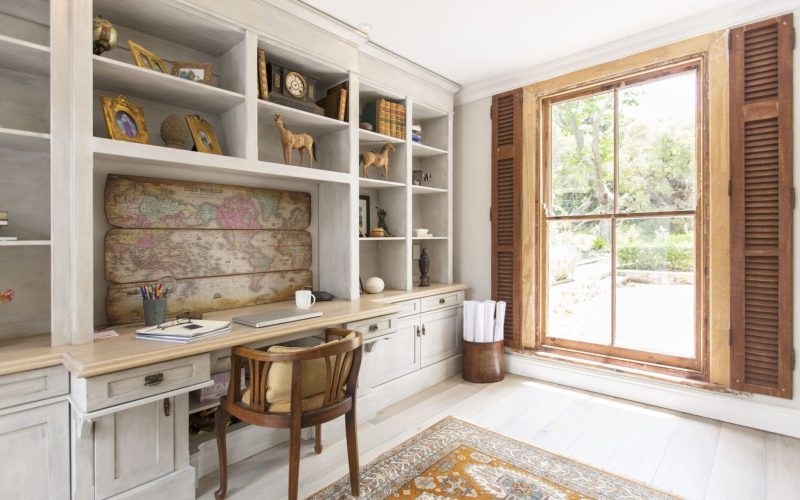If you’ve ever stared at an awkward corner in your living room or wondered what to do with that long, empty hallway wall, you’re not alone. Most homes have underutilized spaces just begging for a purpose — and that’s where custom built-ins come in. These aren’t your average store-bought shelving units or prefabricated cabinets. We’re talking about tailored, built-to-fit, integrated storage and display solutions designed specifically for your home, your life, and your style.
In this article, we’ll dive into what custom built-ins are, how you can use them, why they’re worth considering, and — importantly — why working with a professional is often the smartest move. Let’s get into it.
What Are Custom Built-Ins, Really?
Custom built-ins are permanent or semi-permanent pieces of furniture or cabinetry built directly into the framework of your home. They’re typically designed to match the room’s layout, architectural features, and your personal needs — offering both aesthetic value and practical functionality.
Unlike freestanding furniture, built-ins become part of your home’s physical structure, which makes them a lasting investment in both design and convenience.
Examples of Popular Built-Ins:
- Floor-to-ceiling bookshelves
- Window seats with storage
- Entertainment centers
- Mudroom cubbies and lockers
- Custom closets
- Kitchen banquettes
- Home office cabinetry
- Bathroom linen towers
- Hidden wet bars
- Under-stair storage units
The Real-Life Advantages of Custom Built-Ins
Sure, a bookcase from a big box store might fill a corner, but it’ll never quite compare to something made just for your space. Here’s why:
1. Maximize Awkward or Wasted Spaces
Most homes have dead zones — corners, nooks, or strange wall recesses that serve no clear function. Built-ins turn those areas into purposeful, beautiful storage or display opportunities.
Common Problem Areas:
- Underneath stairs
- Around fireplaces
- Hallways
- Entryways
- Dormers or bay windows
- Empty walls in large, open-concept rooms
2. Tailor Function to Your Family’s Needs
Built-ins aren’t one-size-fits-all. You can design them around what matters most to you:
- A family of readers? Think expansive library walls.
- Work-from-home setup? Integrate a custom desk with hidden cord storage.
- Active kids? Mudroom lockers with hooks, cubbies, and drawers for every season.
3. Boost Home Organization
Having a place for everything minimizes clutter and makes daily life smoother. When your home is organized in a way that works for your lifestyle, you notice it — and so does everyone else.
4. Elevate Home Aesthetics
Built-ins enhance a room’s look by adding architectural interest and creating cohesive, streamlined spaces. They can balance out a large room, anchor a fireplace wall, or give a sense of history and craftsmanship to newer construction.
Space Usage Ideas: Where Built-Ins Really Shine
Let’s walk through where you might consider custom built-ins in your home and what you can do with them.
| Room/Area | Built-In Ideas | Purpose/Use |
| Living Room | Bookshelves, entertainment centers, window seats | Storage, display, cozy seating |
| Home Office | Desk units, filing cabinets, floating shelves | Workspace organization |
| Bedroom | Wardrobe units, headboard shelving, window seats | Storage, display, relaxation |
| Kitchen | Banquettes, pantry shelving, custom wine racks | Dining, storage, aesthetics |
| Bathroom | Linen towers, medicine cabinets, vanity storage | Organization, elegance |
| Mudroom/Entryway | Cubbies, lockers, shoe storage, mail organizers | Daily essentials organization |
| Under Stairs | Drawers, bookshelves, pet nooks | Space optimization |
Design Considerations: How to Plan Your Custom Built-Ins
Before diving into a custom project, it’s essential to think through your priorities and the specific conditions of your home. Here’s a checklist to get started:
- Purpose: What will this built-in accomplish? Storage, display, seating, all of the above?
- Location: Where will it be most useful? Consider traffic flow, lighting, and adjacent uses.
- Aesthetics: Should it blend into the existing décor, or serve as a statement piece?
- Material Choices: Wood species, finishes, and hardware make a big difference in durability and style.
- Future Flexibility: Will your needs in that space change over time?
- Access to Utilities: Will the built-in need lighting, electrical outlets, or HVAC adjustments?
Why Go Pro?
While DIY projects are having a moment, custom built-ins are one area where it’s often smarter to hire a professional carpenter or custom cabinetry company. Here’s why:
1. Precision Fit and Finish
Professional builders have the tools and experience to create built-ins that look seamless — flush with walls, properly aligned, and fully integrated with trim, flooring, and architectural details.
2. Knowledge of Materials
Pros understand which materials are best for different applications. A bathroom linen tower, for example, needs moisture-resistant materials, while a mudroom locker should be built from something that can take a beating.
3. Problem-Solving Skills
Every home has quirks. Walls aren’t always square. Floors dip. Electrical and HVAC lines snake through unexpected places. Professionals know how to adapt.
4. Time Savings
Even for experienced DIYers, custom built-ins can turn into multi-weekend affairs. A professional can handle it efficiently, with fewer interruptions to your life.
5. Access to Resources
Pros have access to high-quality materials, hardware, and finishes that may not be available to the general public — not to mention workshop-grade equipment.
Material Options for Built-Ins
Not all built-ins are created equal, and materials play a huge role in durability, maintenance, and appearance. Here’s a quick look at common options:
| Material | Best For | Pros | Cons |
| Solid Wood | High-end shelving, cabinetry | Durable, beautiful, timeless | Expensive, can warp in humidity |
| MDF (Medium-Density Fiberboard) | Painted built-ins, entertainment units | Smooth finish, affordable | Can swell with moisture |
| Plywood | Storage units, closet systems | Strong, cost-effective | Visible layers at edges |
| Veneer | Decorative finishes | Attractive, lightweight | Can chip or peel if low-quality |
| Melamine | Utility shelves, laundry rooms | Moisture-resistant, low-maintenance | Limited color/texture options |
Real Data: How Popular Are Custom Built-Ins?
According to a 2024 Homeowner Insights Survey by the National Association of Home Builders (NAHB), custom built-ins are one of the top five requested home upgrades, especially in new construction and major renovations. Here’s what their survey found:
Most Popular Custom Features Requested by Homeowners (2024):
- Kitchen pantries: 81%
- Built-in mudroom storage: 65%
- Custom closets: 59%
- Home office cabinetry: 54%
- Living room built-in shelving: 48%
Tips for Working With a Professional
If you’re ready to explore built-ins for your home, here’s how to get the most out of your collaboration with a pro:
- Bring Inspiration: Collect photos from magazines, Pinterest, or Instagram to help your contractor understand your style.
- Be Honest About Your Budget: Professionals can suggest alternative materials or adjust designs to stay within your means.
- Think Long-Term: Discuss how your needs might evolve — for instance, a nursery built-in that could later become a study nook.
- Don’t Skip the Details: Hardware style, lighting options, and trim profiles make a big impact on the finished look.
- Ask for a Portfolio: Any quality builder should have photos of past projects similar to what you’re considering.
Built-Ins Are Worth It
Custom built-ins bring together form and function in a way few home upgrades can. They make daily life easier, cleaner, and more beautiful while adding character and craftsmanship to your home. And while it might be tempting to tackle a built-in project yourself, the precision and finish quality of a professional’s work will almost always outshine even the most well-intentioned DIY effort.
If you’ve got underused space, awkward corners, or rooms that feel unfinished — it might be time to think about going custom.









